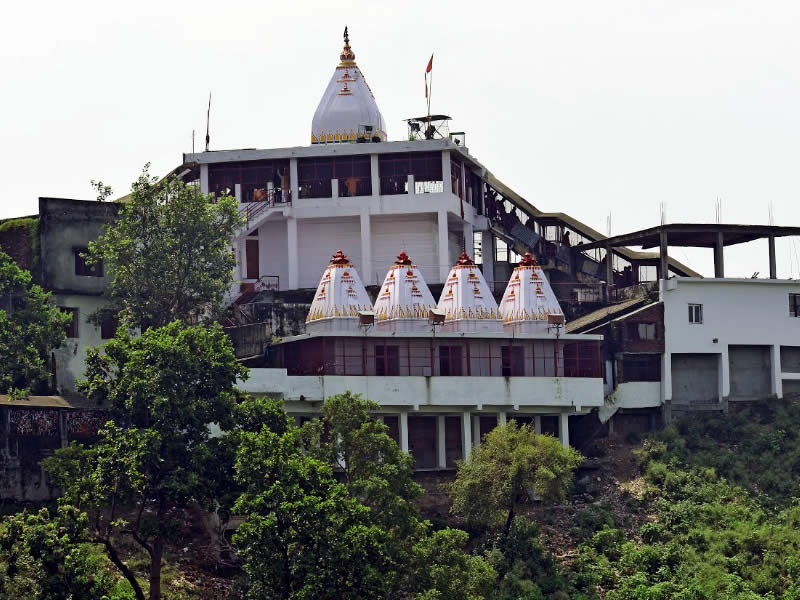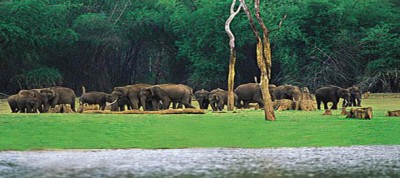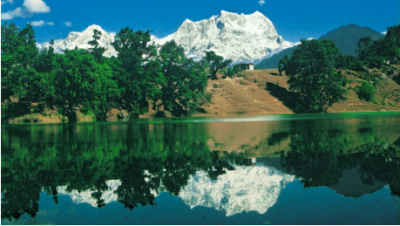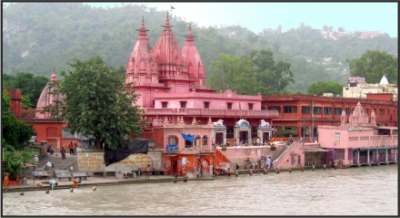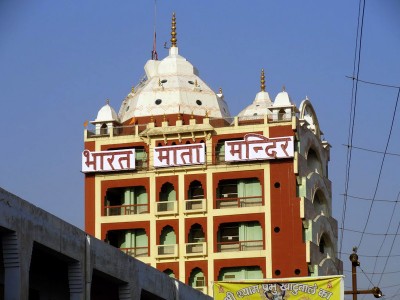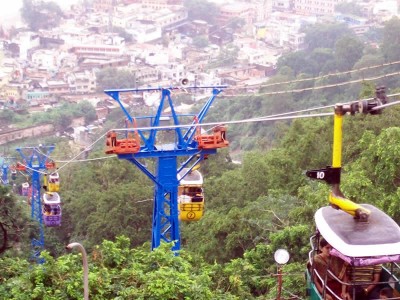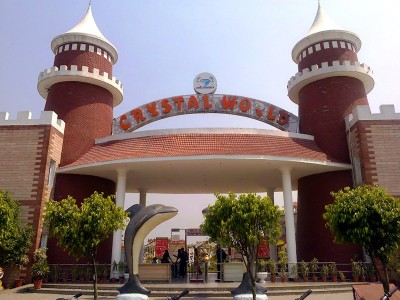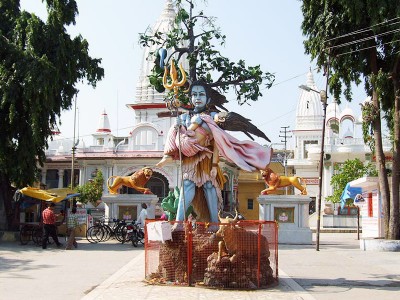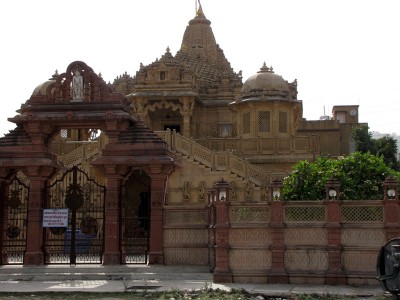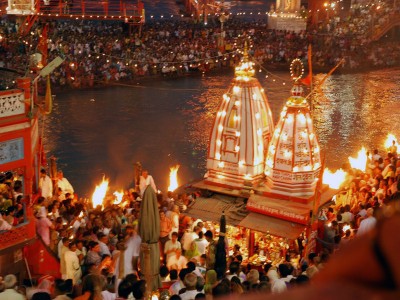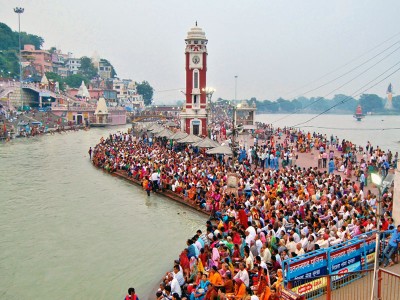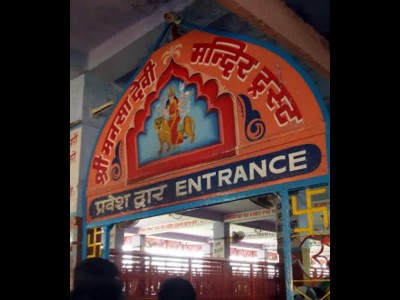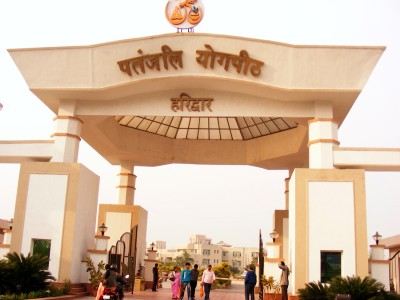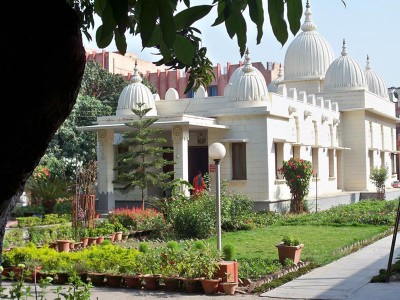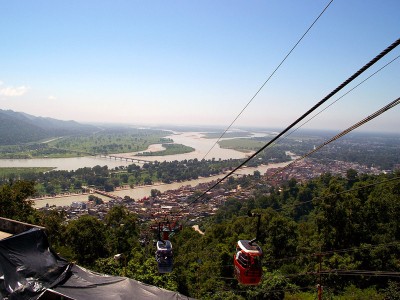Haridwar Tourism and Travel Guide
Amongst the many spiritual places in India, the one which revolves around the holy Ganges River is Haridwar. It is believed that one attains a state of unison with the almighty after visiting this pilgrimage and taking dip in Ganga. The entry point for other spiritual destinations namely Rishikesh, Kedarnath and Badrinath is the holy city of Haridwar or the gateway to God. The source of river Ganga is Gaumukh which is at the edge of Gangotri glacier, and after flowing for 253 kilometres, it enters the Indo-Gangetic Plains of North India for the first time at Haridwar, which gave the city its ancient name, Gangadwara. The history reveals that Haridwar's existence dates back to as early as the days of Buddha. According to legends, during samudra manthan some drops of Amrit or the immortal exilier were accidentally spilled over from the pitcher while being carried by the Godly bird Garuda at Har ki Pauri, Haridwar. Since then, it is regarded as one of the holiest places to Hindus. It is believed that Lord Vishnu have left his footprint on the stone that is set in the upper wall of Har Ki Pauri, where the Holy Ganges touches it at all times.
Haridwar Geo Location
Situated at the base of the Shivalik hills, where the mighty Ganga, flows down from the lap of great Himalayas. Haridwar is well-connected to the rest of India by various means of transport. Delhi, the capital of India, is just at 214km from Haridwar.
Tourist Attraction Near By Haridwar
Haridwar draws many foreign tourists who are spiritually inclined. The famous Kumbh Mela, organized by devotees happens here after every 12 years. The similar Ardha Kumbha Mela is held after every six years. In the morning and evening, Aarti is sung by pujaris on the bank of the pious river Ganga which captivates millions of heart and pilgrims take this enthralling sight of Ganga Aarti back home.
There are other attractions as well in Haridwar besides Har ki Pauri. They are Kushwart Ghat, Kankhal, Bilwa Teerth (Mansa Devi) and Neel Parvat (Chandi Devi), and the five together are known as ‘Panch Teerth’ in the Puranas.
Situated on the top of Neel Parvat in Haridwar, the Chandi Devi Temple is also very famous there among the pilgrims visiting Haridwar. Considered to be one of the Shaktipeeths of North India, it is believed that any devotee who prays here truly from the heart will get his wish fulfilled. That is why, it is also known as Siddhpeetha.
For Lord Shiva bhakts, an ancient temple of Lord Shiva- Daksha Mahadev temple in Kankhal, Haridwar is of great religious significance. This temple is approximately 4 km away from the main township of Haridwar. According to Hindu Mythology, Goddess Sati's father Daksha Prajapati performed a yagna, a holy ritual, at this place, but did not invite Lord Shiva, his son-in-law.
The saddest part is that Ganges is one of the most polluted rivers in India in which level of pollutants is more than 3000 times than the permissible limit defined by the WHO as ‘safe’. Nearly, 40% of Indian population survive on Ganga for its water. But sadly, it tolerates domestic waste, untreated industrial waste, and pollution during religious events. About 89 million litres of sewage is disposed off in the river daily. Prime Minister Narendra Modi showed a hope to clean the holy River Ganga during his election campaign. Cleaning of Ganga has also been mentioned in the manifesto of the Bharatiya Janata Party (BJP) under the cultural heritage sections. They made certain changes in the administration to perform the task. The Ganga Action Plan which was part of the Ministry of Environment and Forests (MoEF) has now been shifted under Water Resources Minister Uma Bharti. As per experts it is essential to bring back the ecological flow of the Ganga which is joined by 115 small rivers. Out of these seven small rivers have been restored and work has to be done on the remaining 108 to revive the ecological flow.



